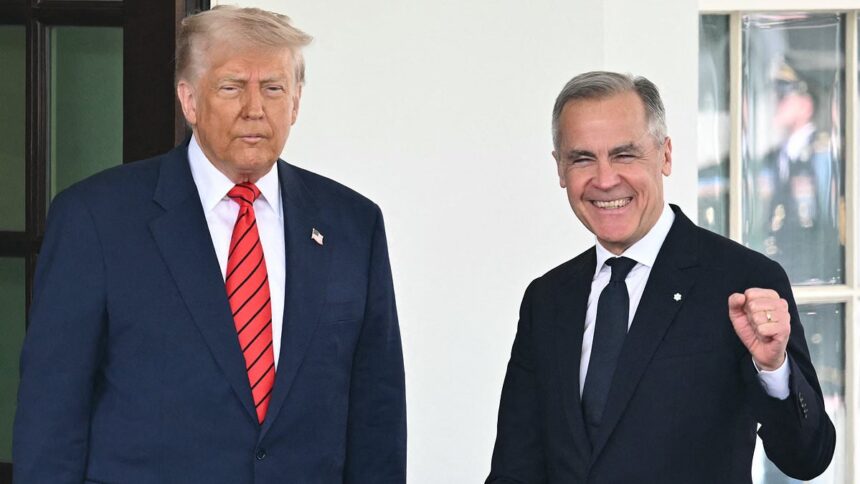Article – Just weeks after president-elect Trump signaled his plans to impose sweeping tariffs on imports from Canada and Mexico, Ottawa has fired back with targeted countermeasures aimed at protecting its steel sector.
“We cannot and will not accept unwarranted tariffs against Canadian steel and aluminum or any other product,” declared Deputy Prime Minister Chrystia Freeland yesterday, announcing duties of 25% on imports of steel products from the United States, effective January 1, 2025—the very day Trump is expected to implement his own tariff scheme.
The timing is no coincidence. I’ve been covering U.S.-Canada trade relations for over a decade, and this preemptive strike represents a significant strategic shift for a country that has historically waited for American action before responding.
During my discussions with Canadian officials in Ottawa last week, one senior trade negotiator who requested anonymity told me, “We learned our lesson in 2018. Being passive only invites more aggression. This time we’re positioning ourselves ahead of the punch.”
The move follows Trump’s November 16 announcement promising 25% tariffs on all Canadian and Mexican imports and an additional 10% on Chinese goods. That declaration sent shockwaves through North American supply chains that have become deeply integrated since the implementation of the USMCA trade agreement.
Economic analysts at the C.D. Howe Institute estimate Trump’s threatened tariffs could cost the Canadian economy approximately $17 billion annually and eliminate up to 120,000 jobs. The steel sector, which employs over 23,000 Canadians directly and supports thousands more indirectly, would be particularly vulnerable.
Walking through Hamilton’s industrial district last month—often called Canada’s steel city—I spoke with Marvin Reeves, a third-generation steelworker at Stelco. “We’ve been through this before,” he said, referencing the 2018 steel tariffs imposed during Trump’s first term. “Last time, we had layoffs, reduced shifts. Some guys never came back. We’re still recovering.”
Canada’s strategic response targets American steel while conspicuously avoiding other sectors, particularly agricultural products from farm states that strongly supported Trump. This surgical approach suggests Ottawa is attempting to maximize pressure while minimizing broader economic disruption to both countries.
“Canada remains open to dialogue with the incoming U.S. administration,” Freeland emphasized. “But we will always stand ready to defend Canadian workers and industries from unfair trade practices.”
The Canadian steel industry has immediately backed the government’s approach. Catherine Cobden, president of the Canadian Steel Producers Association, called the measures “essential protection against potential trade diversion that would severely impact domestic producers.”
Trade tensions between the two nations have historically been manageable, but Trump’s aggressive posture toward America’s largest trading partner has created unprecedented uncertainty. Last year alone, bilateral trade between the U.S. and Canada totaled $885 billion, with deeply integrated supply chains crisscrossing the border.
During my recent reporting from automotive manufacturing facilities in Windsor, Ontario—directly across from Detroit—plant managers described how components often cross the border multiple times before final assembly. One production supervisor at a parts manufacturer told me, “Some components cross five or six times. Every tariff hits us repeatedly. It’s not just added cost—it’s exponential.”
The Biden administration has maintained generally amicable trade relations with Canada, though disputes over dairy access and softwood lumber have persisted. Industry observers fear Trump’s return could unravel the hard-won stability achieved under the USMCA agreement his own administration negotiated.
Economic fallout from a full-blown trade war would be substantial for both nations. Analysis from the Peterson Institute for International Economics suggests U.S. consumers would bear approximately 85% of the cost of tariffs through higher prices on everyday goods.
When I spoke with Dr. Elena Ramírez, trade economist at the University of Toronto, she emphasized the interconnected nature of North American manufacturing. “The average North American vehicle contains parts made in all three USMCA countries. Disrupting these supply chains doesn’t bring production ‘home’—it makes the entire regional industry less competitive globally.”
Canadian officials appear to be calculating that targeted pressure might force reconsideration from the incoming Trump administration, particularly as U.S. steel producers rely on integrated supply chains with Canadian partners.
As both sides prepare for potential escalation, the future of North American economic integration hangs in the balance. For workers and communities on both sides of the world’s longest undefended border, the coming months promise uncertainty and adjustment to what could be a fundamentally altered trade relationship.






